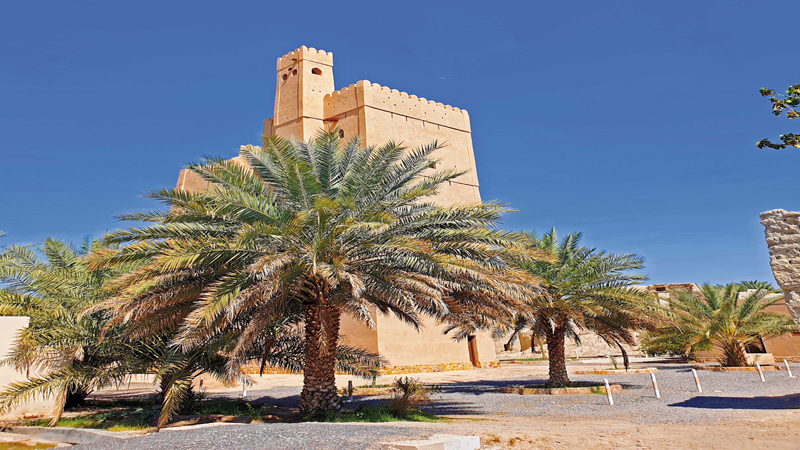

Al Fiqain Castle in Manah is about 15 minutes drive away from Nizwa, it would be of so much interest you can spend hours discovering its inner workings.
Al Fiqain Castle didn't have any doors. At four storey high, its full height is at an estimated 50 feet and the only way to get inside is through a rope tied to a column at the second floor and before the rope comes down, you must know the password.

This is no longer the case nowadays of course. During the restoration and renovation in 2008, the Ministry of Heritage and Culture created a door to make it easier for guests to venture and explore its four different levels.
Al Fiqain tower is both home and prison. Divided into two parts, the northern part was dedicated to defence while the southern part is where occupants live.

A well served as the lifeblood of the whole castle providing the much-needed provision of water used by the occupants on a daily basis. All four floors have direct access to the well and even at the rooftop, one can easily throw down a bucket tied to a rope and with the help of a pulley, bring the water to people guarding the roof deck.
The southern side was dedicated as the living quarters of the occupants. It has a place for storing food, bath area and sleeping. With its construction traced back to as early as 1617 AD, and given the amount of research for its reconstruction, it was a decent shelter that has protected its occupants from troublesome summer heat as the ventilation chambers properly supplied the inside with fresh air keeping it cool regardless the challenging temperature.

With the northern side for security and defence, the guide shared that one room served as prison cell and below it was an isolation chamber. There were also strategic holes on the ground of the second floor where supposedly oils were poured down to enemies who managed to breach the ground floor.
The rest of the floors were chambers for different weaponries and on the third floor, typical of other defence structures in Oman, were canons that kept watch ready to fight off invaders.
Signifying the importance of reading and sharing knowledge, a portion of the fourth floor was dedicated and served as a library where shelves used to house religious and scientific books, manuscripts and other important documents.

In an earlier story printed by Oman Observer, researcher in Omani history Khalfan bin Salim al Busaidi shared that the castle “was built by a group of skilled and experienced engineers from the Wilayat of Manah" and added that its protection was carried out by some Imams as far back as 1333 AH.
Student Almutasim al Mahmoodi who is proud of his village's history shared that the castle has always been a fascinating aspect of their town that not a lot of people know about.

"The castle used to be surrounded by ancient traditional houses and to this day, visitors can still see the remains of the mud houses that the castle used to protect. We grew up in this area and we take pride in how this was instrumental in shaping and telling the story of the people who came before us," he shared.
Al Mahmoodi added that upon learning the importance and the significance of the tower, he has been one of the many locals who kept telling its story becoming an ambassador-of-sort for its promotion and to interest people to come to Manah and also explore its historical attractions.

"As kids, we used to play around here. From the roof deck, you have a good view of the farms and the houses that surround it. Just imagine the rich history and what it must have been like in the past. By learning the story of the people of Manah, one is able to appreciate how far it has grown yet how deeply rooted it has remained to its origin," he said.
While the tower was officially opened on June 24, 1994, it has gone through a massive transformation but stayed true to its original design allowing people of the present access to a distant interesting past.
Oman Observer is now on the WhatsApp channel. Click here



